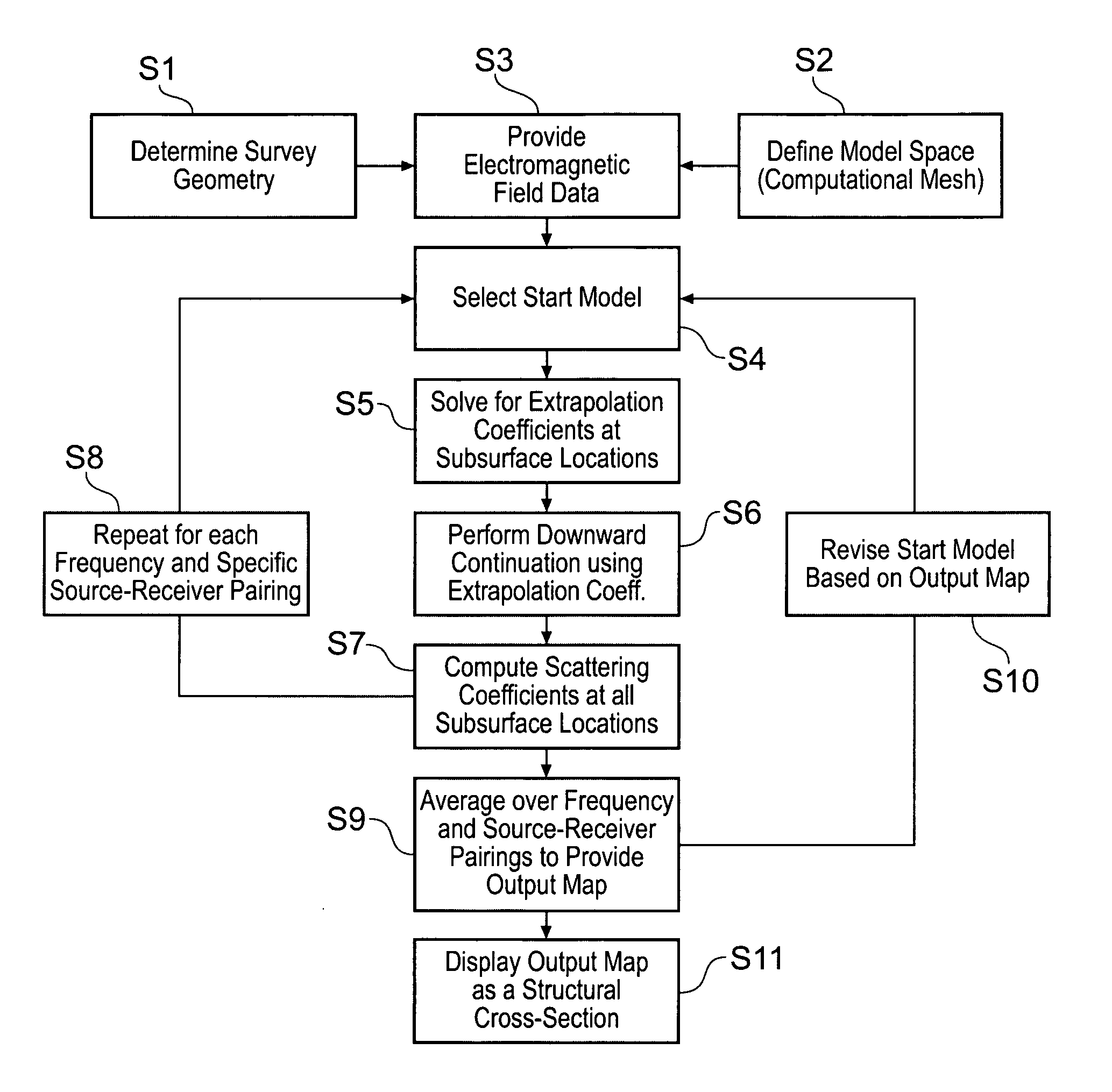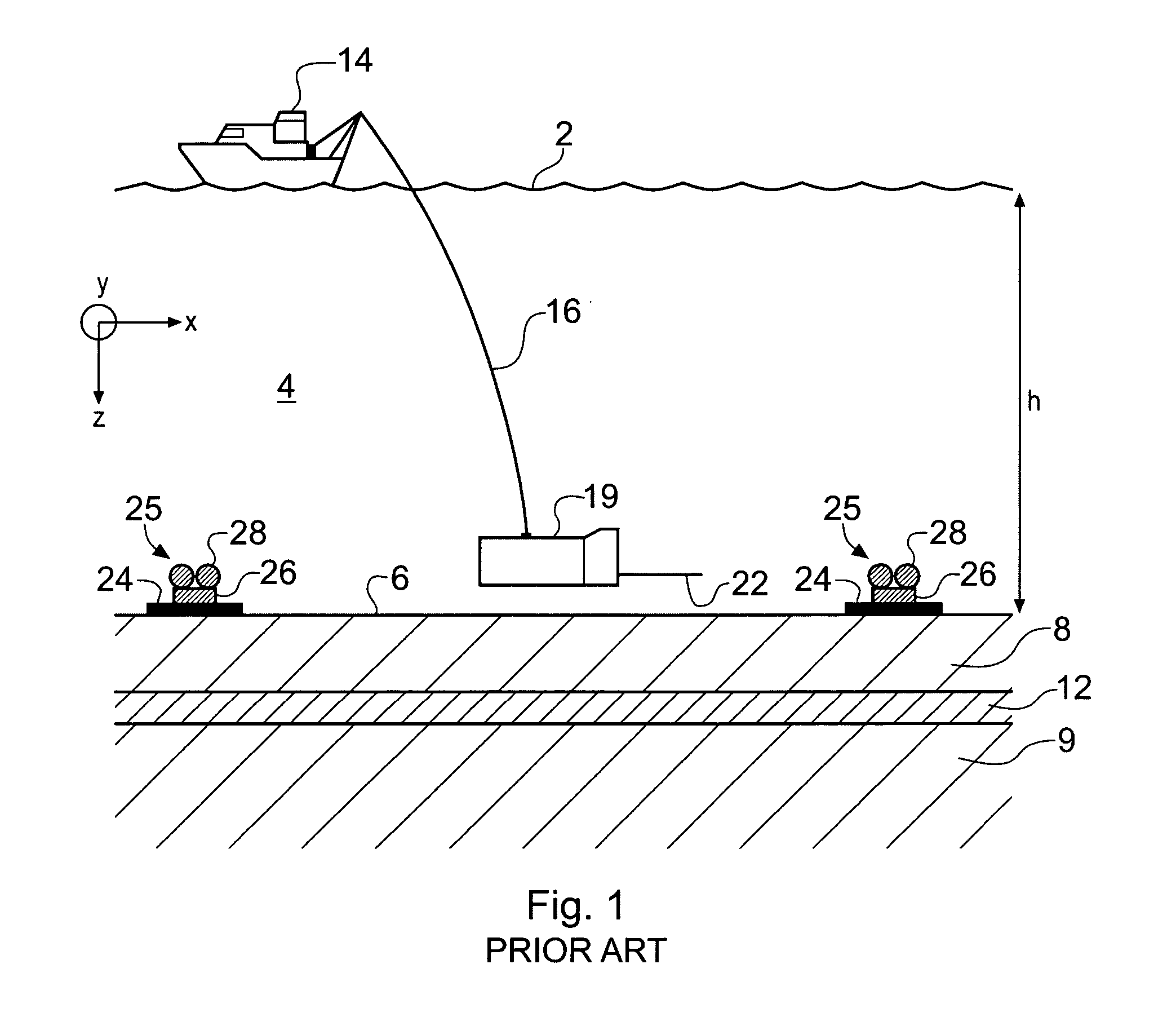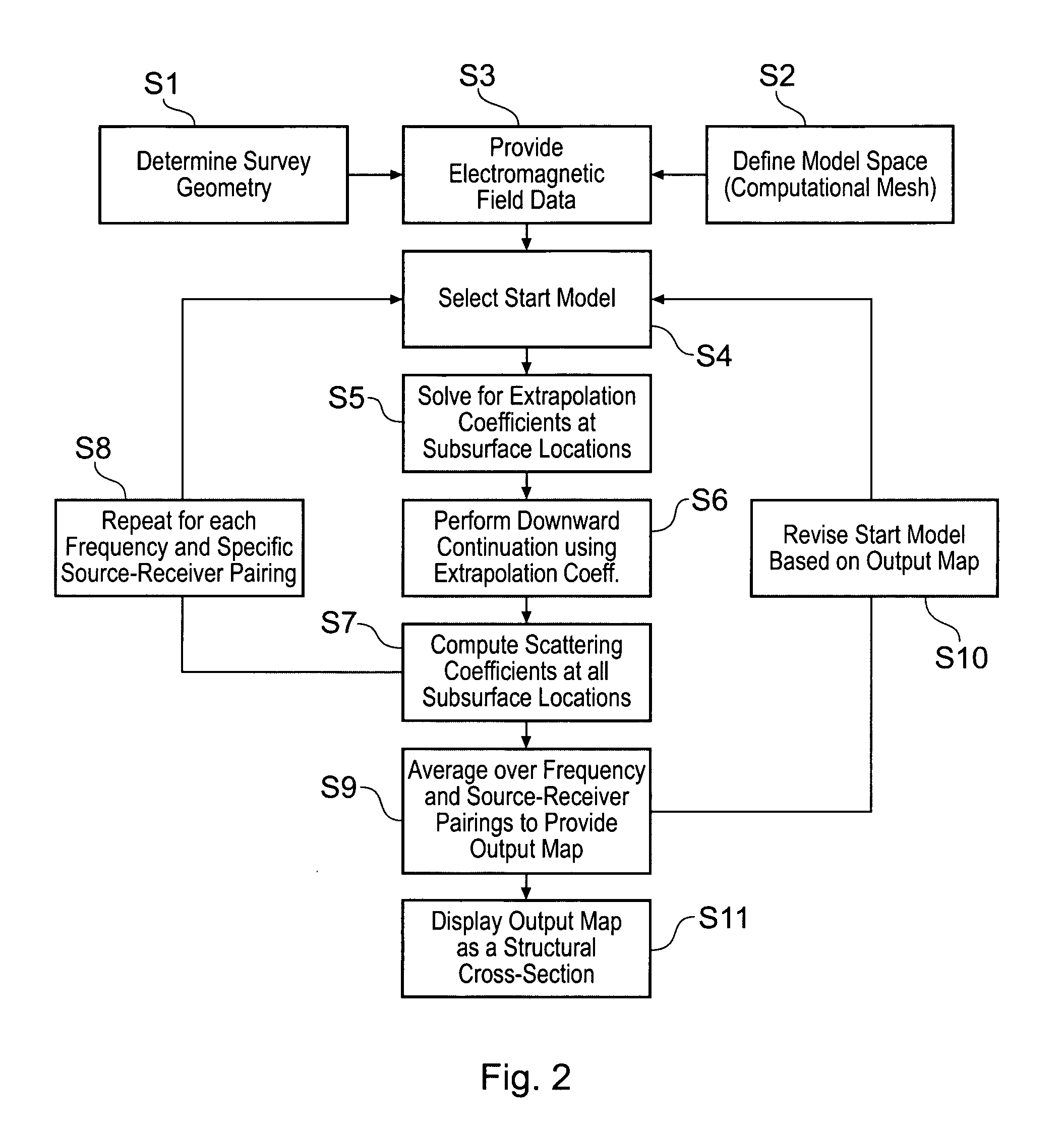Electromagnetic surveying for hydrocarbon reservoirs
a hydrocarbon reservoir and electromagnetic technology, applied in the field of controlled source electromagnetic, can solve the problems of time-consuming and laborious surveying process, limited useful data, and inability to provide data amenable to conventional geophysical inversion analysis techniques, and achieve the effect of easy generation
- Summary
- Abstract
- Description
- Claims
- Application Information
AI Technical Summary
Benefits of technology
Problems solved by technology
Method used
Image
Examples
example results
[0089]FIG. 4A schematically shows in vertical cross-section a model 2-D subterranean strata configuration beneath an area of seafloor 6. The model comprises a wedge shaped structure 40 having a resistivity of 100Ωm embedded in a uniform background having a resistivity of 1Ωm. The upper edge of the wedge 40 is approximately 2000 m below the seafloor. The wedge is around 800 m thick and has a horizontal extent of around 6000 m at its base. Depth (d) below sea-level is marked on the left-hand side of the figure. Horizontal location (x) measured from an arbitrary origin is marked along the bottom.
[0090]FIG. 4B is a grayscale plot schematically showing the real component of the scattering coefficient (Scat) calculated using the above described 2-D wavefield imaging analysis for the model subterranean strata configuration shown in FIG. 4A as a function of depth beneath sea-level (d) and horizontal position (x). A shade bar to the right of the figure shows the relationship between grayscal...
PUM
 Login to View More
Login to View More Abstract
Description
Claims
Application Information
 Login to View More
Login to View More - R&D
- Intellectual Property
- Life Sciences
- Materials
- Tech Scout
- Unparalleled Data Quality
- Higher Quality Content
- 60% Fewer Hallucinations
Browse by: Latest US Patents, China's latest patents, Technical Efficacy Thesaurus, Application Domain, Technology Topic, Popular Technical Reports.
© 2025 PatSnap. All rights reserved.Legal|Privacy policy|Modern Slavery Act Transparency Statement|Sitemap|About US| Contact US: help@patsnap.com



